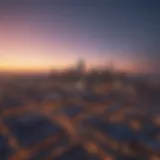How to Create Your Own Lava Lamp at Home
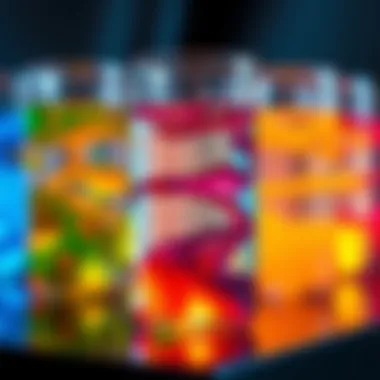

Intro
Creating a lava lamp at home might sound like something out of a science fiction movie, but in reality, it’s an exciting and engaging project that can spark curiosity and creativity in everyone involved. For kids aged 5 to 12, working on this project can unveil the mysteries of science while having a lot of fun. Plus, it transforms simple household materials into something mesmerizing. What’s more amazing is how a few easy steps can turn everyday items into a colorful, moving spectacle.
In this guide, we will explore not just how to assemble a lava lamp, but also dive into the fascinating science behind it. This journey will demonstrate the basic principles of density and chemical reactions and introduce creative ways to personalize the finished product. It’s an enriching experience that offers both educational value and artistic expression, making it perfect for children, parents, educators, and anyone eager to learn and discover.!
Through this exploration, readers will find the ingredients you need, step-by-step instructions, and tips to enhance their lava lamp adventure. So, roll up your sleeves and prepare to mix, pour, and watch in delight as your homemade lava lamp lights up with colorful bubbles!
Prelims to Lava Lamps
Lava lamps have captivated imaginations since they first lit up living rooms and bedrooms. These intriguing devices not only provide a unique aesthetic but also offer a glimpse into the world of science, specifically the principles of density and chemical reactions. They serve as a perfect blend of art and chemistry, making them an ideal project for young minds eager to explore the wonders of the scientific realm.
Crafting your own lava lamp at home is more than just a fun activity; it teaches valuable lessons about observation, experimentation, and patience. Children can learn how different substances interact, gain an appreciation for the laws of physics, and engage in creative expression by customizing their lamps.
What Is a Lava Lamp?
A lava lamp is more than just a decorative item. It’s a whimsical device that creates a mesmerizing spectacle through the movement of colorful blobs of wax rising and falling within a transparent liquid. Typically, the lamp consists of a glass container filled primarily with a colored, translucent liquid and a colored wax-based material. When heated from below, the wax becomes less dense, rising to the surface, then cooling and sinking back down, creating a continuous cycle that can be both soothing and fascinating.
The magic of the lava lamp lies in its ability to transform simple materials into a flowing, colorful display. Many people are drawn to their soothing glow, making them popular fixtures in homes, offices, and even classrooms. However, what truly makes them special is how they serve as a visual representation of scientific principles at play.
History of the Lava Lamp
The story of the lava lamp dates back to the 1960s when an English inventor named Edward Craven Walker created the first ever lava lamp, which he called the "Astrolight." Inspired by a homemade egg timer that used a similar principle, he saw the potential for this fascinating design as a decorative lamp. After establishing his company, Mathmos, Walker began producing and marketing the lamps, and they quickly became a cultural icon of the 60s and 70s.
Since then, the lava lamp has transcended its era, undergoing various designs and color schemes, making it relevant to generations past and present. These lamps, once a symbol of psychedelic culture, are now used in homes and educational settings alike, promoting creativity and curiosity.
While people enjoy the allure of lava lamps today, understanding their history adds another layer of appreciation. The development, design, and popularity of the lava lamp are as captivating as the swirling blobs it contains, reflecting the intersection of art and science that continues to inspire new generations.
Understanding the Science
Creating a lava lamp is more than just an exercise in creativity; it's an exploration of science that can spark curiosity in young minds. Understanding how a lava lamp works requires a basic grasp of concepts like density, temperature, and chemical reactions. These scientific principles come together to display a mesmerizing effect that captures our attention. For kids, this hands-on activity not only teaches them about physical science but also encourages experimentation. They ask questions, make predictions, and see the outcomes in real-time. It’s a fantastic way to bring science from the textbook into the living room.
What Makes a Lava Lamp Work?
The magic of a lava lamp lies in its unique mechanism of action, which is essentially about how materials interact based on their properties. At its core, a lava lamp consists of two main liquids: water and oil. Here’s how they come together to create that iconic flowing motion:
- Different Densities: Oil is less dense than water, which is why it floats on top. When the lamp is heated, the water and oil respond differently.
- Heating Process: A light bulb or some heating element at the base warms the liquid. As temperature rises, the water becomes lighter and starts to rise. Cool water at the top sinks back down as it cools, creating a continuous cycle.
- Bubbles of Gas: Adding an effervescent tablet like Baking Soda or Alka-Seltzer introduces carbon dioxide gas. These bubbles trap darker water, making the 'lava' rise and fall dramatically.
Understanding these principles offers kids a first-hand look at how science can be seen in everyday objects. Once they set up their lava lamp, the wonders of physical science come alive right before their eyes!
The Role of Density and Temperature
Density and temperature are crucial to the operation of a lava lamp and delve deeper into the fundamentals of physical science. Here’s what these terms mean in this context:
- Density: This is how much mass is contained in a particular volume. When you mix oil and water, their different densities lead to oil collecting on top of water.
- Temperature Effects: As the lamp heats up, temperature changes can manipulate the state of the materials involved. When the liquid gets heated, it can change density, causing it to move. The warmer the water, the less dense it becomes, and so it rises.
- Creating Movement: The combination of density differences and temperature variations results in the beautiful 'lava' effect that people love to watch. It’s all about how things move and change based on their surroundings, neatly wrapped up in a colorful, swirling display.
When children grasp these concepts, it helps them appreciate the world around them. The interplay of temperature and density in their lava lamp may resonate in their minds, nudging them toward future explorations in science.
"Science is not only a discipline of intellectuals but also an adventure of imagination."
Encouraging kids to take note of these interactions in their lava lamp demonstrates the importance of observation in scientific discovery.
Materials Required
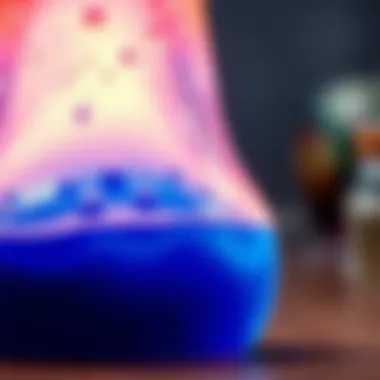

When embarking on the adventure of creating your own lava lamp, the materials you select play a crucial role in the success of your project. This section breaks down the necessary items, their significance, and how each one contributes to the desired outcome. Understanding the materials is key, as they not only facilitate the chemical reactions needed for the lamp but also allow for personalization and creativity.
Essential Ingredients
Water
Water is the foundation of the lava lamp experiment. Its ability to mix with certain substances makes it a vital component. One key characteristic of water is its density; it is denser than oil, allowing for the separate layers to form, which is essential for the lava-like effect. Additionally, water is widely accessible and safe to use, making it the first choice for any home science project.
A unique feature of water is how it interacts with the oil and baking soda or Alka-Seltzer. When combined, the water creates bubbles that rise and fall, mimicking the classic lava lamp movement. However, one minor disadvantage of using water is that it can evaporate over time, requiring occasional replacements or adjustments in your lamp. But, this can be a fun chance to try different colored waters in future experiments.
Oil
Following water, oil is another essential player in your lava lamp creation. The key feature of oil is its lower density compared to water. This property allows oil to float on top of the water, creating the distinct separation that characterizes a lava lamp. Vegetable oil, commonly used for cooking, works well because it mixes easily and provides a smooth surface.
Oil's unique characteristic contributes to the visual appeal of your lava lamp, offering a striking contrast against the colored water below. However, teasing out bubbles of color can be a challenge without proper mixing. Furthermore, too much oil can hinder the movement of bubbles, so it’s important to strike the right balance in your mixture.
Food Coloring
Food coloring is the artistic touch in this scientific project. By adding food coloring to your mixture, you can create vibrant visual displays. Food coloring is particularly beneficial because it readily dissolves in water, allowing for uniform distribution of color throughout the liquid.
A unique feature of food coloring is that it comes in various colors, opening up numerous creative possibilities. However, it is best to avoid adding too much, as overly dark waters can obscure the lava effect and diminish the overall impact of your lamp.
Baking Soda or Alka-Seltzer
Finally, we have either baking soda or Alka-Seltzer, which introduces the effervescent reaction that makes your lava lamp truly shine. The key aspect here is that both substances release carbon dioxide when they react with water. This reaction produces bubbles that create the rising and falling motion we associate with lava lamps.
The advantage of baking soda is that it’s easy to find and typically inexpensive. Alka-Seltzer, on the other hand, is designed specifically to dissolve in water, making it a quick and effective option for this experiment. However, using too much can lead to rapid bubbling and could potentially overflow, so moderation is key here.
Optional Materials for Customization
Glitter
Adding glitter to your lava lamp brings an extra spark of whimsy to your design. Glitter not only enhances visual interest but also can create intriguing effects when reacting to the movements in the liquid. With a range of colors and sizes available, you can customize the look of your lava lamp to reflect your personal style.
One potential downside to glitter is that it can eventually settle at the bottom, which may affect the overall aesthetic if you desire constant motion. However, it’s still a fun addition that provides a unique touch.
Small Plastic Figurines
Incorporating small plastic figurines can infuse your lava lamp with personality. These can range from whimsical characters to themed decorations, allowing for an engaging overall look. By carefully selecting figurines, you can create layered designs that float alongside the bubbling movements of the lamp.
However, be mindful that larger or heavier figurines may disrupt the fluid dynamics and restrict the movement of bubbles, reducing the lava-like dynamic. Therefore, choosing items that are appropriately sized is important to maintain the lamp's visual appeal.
Colored Sand
Finally, colored sand can also be used to create a stunning base for your lava lamp. By layering different colors, you can build a beautiful gradient or mix of hues, adding depth to your design. Colored sand stays in place, contrasting wonderfully with the bubbling water above.
Yet, the challenge with sand is that it can weigh down the bubbles, which might hinder their movement. A careful balance of layering sand and liquid is needed to achieve a successful effect.
In summary, the materials you choose not only construct the skeleton of your lava lamp but also dictate its character and aesthetics. Each ingredient plays its own part in bringing to life the captivating visuals that make lava lamps such a cherished project.
Step-by-Step Instructions
Creating a lava lamp at home is not just a fun activity; it's an opportunity to delve into the world of science. This section lays out a path to success in crafting your own mesmerizing lava lamp. Each step is straightforward, ensuring that everyone, from curious kids to hands-on educators, can follow along easily. The importance of these instructions lies in their simplicity and clarity. Each action builds on the previous one, so skipping around can lead to a mixture that just doesn't bubble the way it's supposed to. Let's dive into the nitty-gritty of forming this groovy centerpiece.
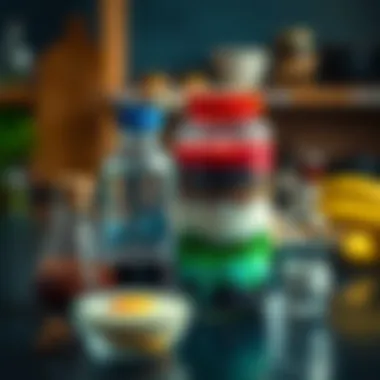

Preparing the Base
Before jumping into mixing ingredients, the first task is all about the physical setup. A sturdy and clean base is crucial for your lava lamp. Start by choosing a glass jar or any clear, tall container that will showcase all the bubbly action.
- Choosing the Right Container: Make sure it's transparent so you can see the colors and movements. A jar with a wide opening might be easier to work with, especially for kids who need a little more room to maneuver.
- Safety First: Always wash the container before using it, removing any dust or residues. This way, when you add the liquids, you'll have a clean slate to work with. The aesthetics of your lava lamp can depend significantly on how clear and clean your base is.
Adding Water and Oil
With your base prepared, it’s time to add your primary materials: water and oil. This step is key, as it sets up the density gradient necessary for the lava lamp effect.
- Start with Water: Fill your jar about one-third full with warm water. The warmth can help the colors mix later on.
- Carefully Add Oil: Now, pour in the oil, filling the container until it’s almost full. The oil and water will not mix because of their different densities. This is where the magic starts! You will see the oil form a distinct layer on top of the water.
"The fascinating thing about oil is that it tends to float! This is because it’s lighter than water, which helps create that iconic lava lamp structure."
Incorporating Food Coloring
Next up is infusing some color into the scene. Food coloring not only adds vibrancy but also plays a key role in the science behind the lava lamp effect.
- Choosing Your Colors: Pick any color you fancy. It’s like painting a mini masterpiece! When you’re done, drop a few drops of food coloring into the jar. You’ll notice the coloring going down through the oil, creating tiny spheres that rest on the water below, rather than mixing. This separation is a cool illustration of density at work.
- A Helpful Trick: If you want to add different colors, drop them in one at a time and notice how they interact before they settle. You can create a rainbow effect if you’re feeling adventurous.
Creating the Lava Effect
Here it comes—the moment of transformation where ingredients meld, resulting in that mesmerizing lava effect. It’s time to make the lamp come to life!
- The Secret Ingredient: Take your baking soda or Alka-Seltzer and break it into small pieces. Adding this to the jar will cause a reaction that creates bubbles.
- Drop It In: Start dropping the pieces into your prepared jar. As the fizzing begins, you'll notice blobs of colored water rise and fall through the oil, mimicking the classic lava lamp effect. The baking soda reacts and releases carbon dioxide gas, forming the bubbles that carry the colorful water upwards.
- Observe and Enjoy: This is where you can really observe the changes. The rising and falling will continue as long as there are reactants to create those delightful bubbles. It may be a simple science project, but the joy it brings can be immense!
By following these step-by-step instructions, you'll create not just a lava lamp but likely a newfound appreciation for science through hands-on learning. Engage with the process, make adjustments, and enjoy every colorful moment!
Enhancing Your Lava Lamp Experience
Creating your own lava lamp is not just about making a colorful decoration; it’s an opportunity for discovery and creativity. This part of the article explores how to elevate your lava lamp project, making the experience even more engaging and interactive for children. By enhancing the visual spectacle and encouraging experimentation, you build a deeper understanding of science and art together.
Experimenting with Colors
One fascinating way to elevate your lava lamp is by playing with colors. Adding various shades of food coloring can transform the appearance of your lamp. Why stop at just one color? Experimenting with multiple hues creates stunning visual effects. Children can mix and match, witnessing firsthand the results of their choices. For example, combining blue and yellow might yield a vibrant green, while mixing red and blue produces a striking purple.
To take it a step further, consider these ideas:
- Layering Colors: Start by adding different colors at the same time but in separate layers. When the lamp is activated, the results can be breathtaking.
- Glow-in-the-Dark Additives: Adding glow-in-the-dark paint or stickers will create a mystical effect when the lights dim. Kids will love turning the lamp on at night!
- Color Themes for Special Occasions: Depending on the time of year or a celebration—like Halloween or Christmas—using colors that reflect these themes can make the experience more festive.
Timing and Observations
Time management might not seem essential at first glance, but it plays a crucial role in enhancing the lava lamp experience. By encouraging children to observe how quickly or slowly the lava effect develops, they learn about reactions and their timeframes. Take a stop-watch and time how long it takes for the bubbles to rise and fall. This activity immerses them in science and inspires observational skills.
Encourage youngsters to keep a simple journal to jot down their experiences while creating and watching their lamps. They can note things like:
- Reaction Times: How long did it take for the color to infuse or for the first bubble to rise?
- Visual Changes: What new colors emerged as they layered? Did anything unexpected occur during the process?
- Favorite Combinations: Maybe one combination worked better than another. Which one created the most beautiful effect?
Through observation and experimentation, children not only enhance their lava lamp experience but also foster critical thinking skills that will benefit their education.
By enhancing their lava lamp creation with colors and structured observation, children can enjoy the beauty of science in a totally captivating way. This not only sparks creativity but also fosters a greater appreciation for the simple wonders of the world.
Understanding Chemical Reactions
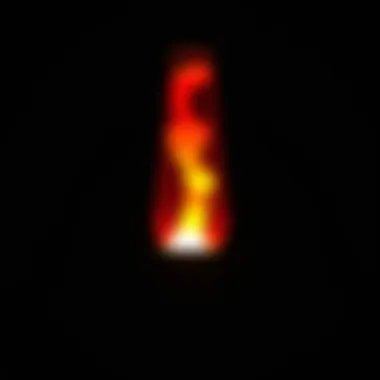

When we talk about creating a lava lamp, diving into the realm of chemical reactions is key. Understanding chemical reactions helps young learners appreciate what's happening in their ever-so-cool creations. Not only does this knowledge shed light on the marvels behind the simple act of mixing certain ingredients, but it also empowers children to become more curious about the science around them.
By exploring the reactions involved, kids can see firsthand how combining oil and water leads to spectacular visuals. It’s not just about seeing the blobs rise and fall; it’s about grasping the concept of density, solubility, and what happens when a fizzy agent is mixed in. Learning through hands-on experiences like making a lava lamp can foster a love for science, encouraging children to ask questions, explore, and discover more about their surroundings.
What Happens Inside the Lava Lamp?
Inside a lava lamp, a fascinating dance occurs. The key players in this performance are water, oil, and the fizzing agent, like baking soda or Alka-Seltzer. When you mix the oil and water in a jar or bottle, they don’t blend well—water is heavier and sinks below the lighter oil. This sets the stage for what’s to come.
As we introduce the baking soda or Alka-Seltzer, a transformation begins. When the fizzing agent dissolves, it releases carbon dioxide gas. This gas build-up creates bubbles that carry water upwards through the oil. Once they reach the top, they pop, releasing the trapped gas back into the air, and the water blob sinks again. This cycle persists until the reaction fizzles out. We can think of it as a mini roller coaster inside the lamp—up and down, over and over.
For children, this is a captivating way to explain concepts like buoyancy and gas laws without the need for heavy vocabulary. It can spark a "Ah ha!" moment, igniting a passion for understanding how the world works.
Why Do the Colors Separate?
The separation of colors in a lava lamp stems from the different properties of the liquids involved—mainly their density and solubility. Water, colored with food coloring, is denser than oil. When combined, they form distinct layers, with colored water settling at the bottom and oil floating above.
Additionally, the food coloring is soluble in water but not in oil. When it's mixed, the colors do not disperse uniformly with the oil. Instead, the colored droplets remain with the water, contributing to the mesmerizing effect.
Think of it like oil and vinegar in a salad dressing—no matter how hard you shake, they won't completely blend. This visual not only makes for a beautiful display but also provides an excellent opportunity for children to see chemistry in action.
By understanding that colors stay put and separate based on their properties, kids can further appreciate how many things in our world obey similar rules. Teaching them that science can be colorful and lively engages them to think more critically about their experiences.
"The beauty of science is that it never runs out of wonders to explore."
Through making a lava lamp, children aren't just playing; they are learning about chemical principles, fostering a mindset that holds the potential for real scientific inquiry.
Safety Considerations
When it comes to creating your own lava lamp, safety has to be number one on the list. While the ingredients used are generally safe, it's still important to follow some common-sense practices to ensure that everyone involved has a fun and accident-free experience. By paying attention to safety considerations, we can fully enjoy the creative process without any worries lurking in the background.
Working with Household Materials
Most of the supplies needed to make a lava lamp are readily available in your home. However, it's good to ensure that these materials are suitable and safe for your age group. Here's a short breakdown:
- Water: Safe for all, just make sure it's clean.
- Oil: Common vegetable oil works perfectly. Avoid using motor oil or any toxic substances.
- Food Coloring: Typically safe, but some brands may stain, so use with caution.
- Baking Soda/Alka-Seltzer: Should be handled as indicated on the package, especially Alka-Seltzer, which should not be consumed.
Make sure to supervise younger children when engaging in this activity. Even though the materials are familiar, sometimes kids can get a bit too adventurous. Establishing a clean workspace is also a good idea. It keeps things neat and reduces the chance of spills and messes that could lead to slips or other accidents.
Tips for Safe Experimentation
To have a safe and enjoyable lava lamp project, keep these tips in mind:
- Supervise Younger Children: Always have an adult present, especially for kids aged five to seven.
- Read Instructions Together: Before starting, read through the instructions as a team. Knowing what comes next can make things safer and smoother.
- Use Appropriate Tools: Make sure to use child-safe scissors or measuring tools if needed. Avoid sharp edges and glass containers that break easily.
- Clean Up spills Promptly: In case of spills or accidents, promptly clean them up to prevent slipping or contamination.
- Store Materials Safely: After the project, ensure that leftover materials are stored out of reach to prevent any accidents.
Following these basic rules can go a long way in making the lava lamp crafting experience both enjoyable and safe.
Remember, safety first means more fun later!
The End
Summarizing the Experiment
In essence, the experiment of building a lava lamp merges art and science. By mixing water, oil, and a few added surprises like food coloring, you create a vibrant dance of colors right before your eyes. The beauty of this project lies in observing how different densities and temperatures make the "lava" rise and fall. Each creation is unique, much like the individuals crafting them.
Remember: Every attempt to create this mesmerizing lamp teaches lessons in chemical reactions and properties of liquids. When kids mix ingredients, they learn not only about physics and chemistry, but also patience and observation—vital skills for any budding scientist.
Encouraging Further Exploration
After successfully crafting a lava lamp, the possibilities for further experimentation are endless. Encouraging young minds to explore additional materials can lead to exciting outcomes. For example, could adding more baking soda create a more dramatic effect? What about trying different shapes and sizes of containers?
Encouraging exploration also means encouraging questions: Why does the oil float? What would happen if we tried syrup instead of water? Engaging these questions allows children to understand that science isn’t just about finding answers; it’s about asking the right questions. With a little imagination, the simple act of creating a lava lamp can blossom into broader experiments, potential new hobbies, or even a lifelong passion for science.
